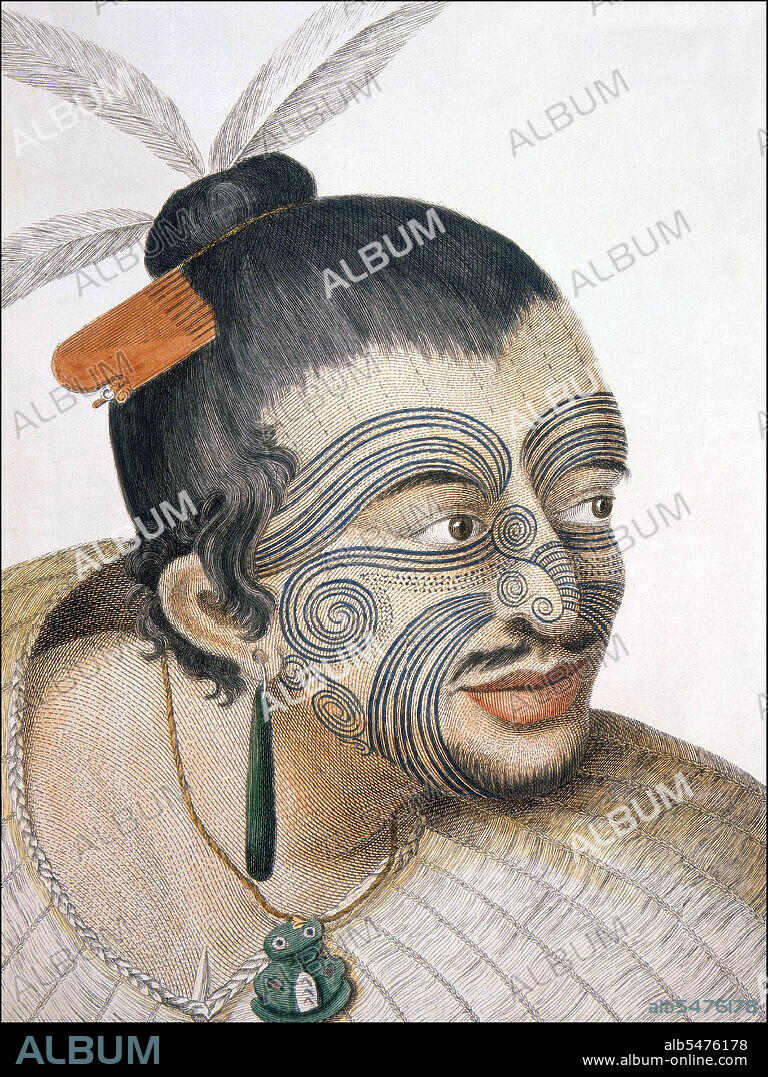alb5476178
New Zealand: A Maori chief with facial moko tattoo, Sydney Parkinson,1769

|
Add to another lightbox |
|
Add to another lightbox |



Title:
New Zealand: A Maori chief with facial moko tattoo, Sydney Parkinson,1769
Caption:
Head and shoulders portrait of a Maori man, his hair in a topknot with feathers and a bone comb, full facial moko, a greenstone earring, a tiki and a flax cloak. He has a small beard and a moustache. Sydney Parkinson (1745-1771) was the artist on Captain Cook's first voyage to New Zealand in 1769. Ta moko is the permanent body and face marking by Maori, the indigenous people of New Zealand. Traditionally it is distinct from tattoo and tatau in that the skin was carved by uhi (chisels) rather than punctured. This left the skin with grooves, rather than a smooth surface. Captain Cook wrote in 1769: 'The marks in general are spirals drawn with great nicety and even elegance. One side corresponds with the other. The marks on the body resemble foliage in old chased ornaments, convolutions of filigree work, but in these they have such a luxury of forms that of a hundred which at first appeared exactly the same no two were formed alike on close examination'. The tattooists were considered tapu, or exceptionally inviolable and sacred.
Credit:
Album / Pictures From History/Universal Images Group
Releases:
Model: No - Property: No
Rights questions?
Rights questions?
Image size:
3665 x 4884 px | 51.2 MB
Print size:
31.0 x 41.4 cm | 12.2 x 16.3 in (300 dpi)
Keywords:
ART • ARTS • DISCOVERY AND EXPLORATION • HISTORIA UNIVERSAL • HISTORICAL IMAGES • HISTORICAL PICTURES • HISTORICAL • HISTORY IMAGES • HISTORY PICTURES • HISTORY • LEGEND • MAORI • MOKO • NEW ZEALAND • PACIFIC • PAINT • PAINTING • PARKINSON, SYDNEY • POLYNESIA • POLYNESIAN FOLK ART • POLYNESIAN • POYNESIAN • SOUTH PACIFIC • TA MOKO • TATOO • TATTOO • TATTOOING • TATTOOS
 Pinterest
Pinterest Twitter
Twitter Facebook
Facebook Copy link
Copy link Email
Email

